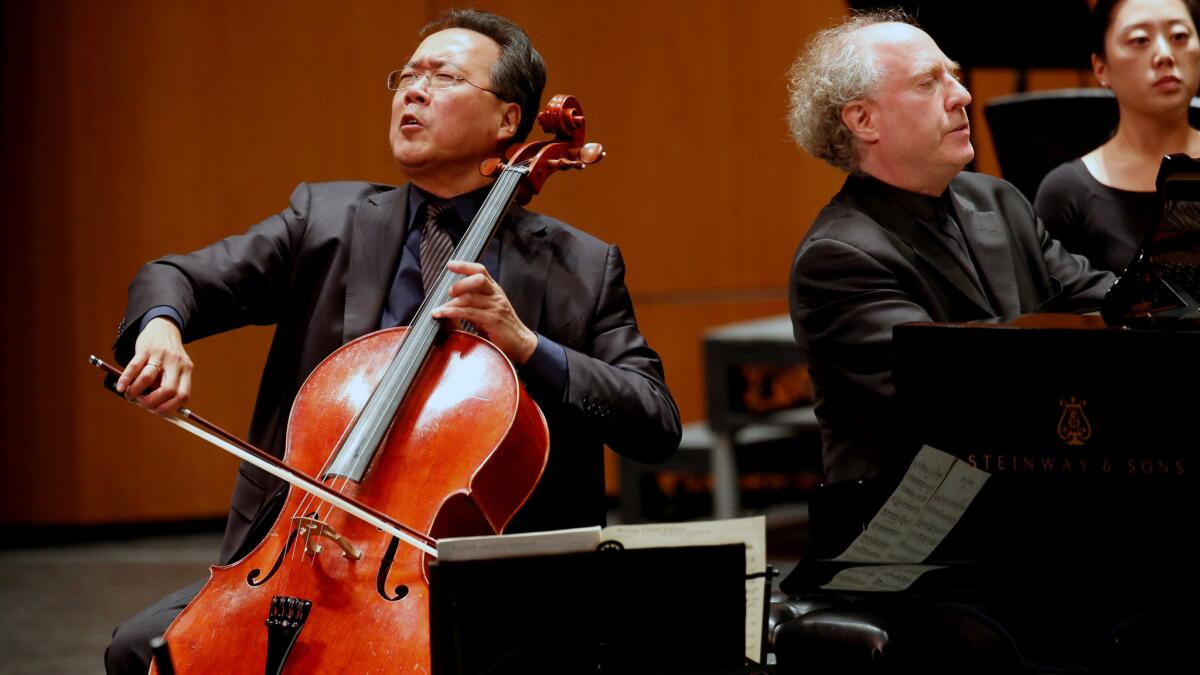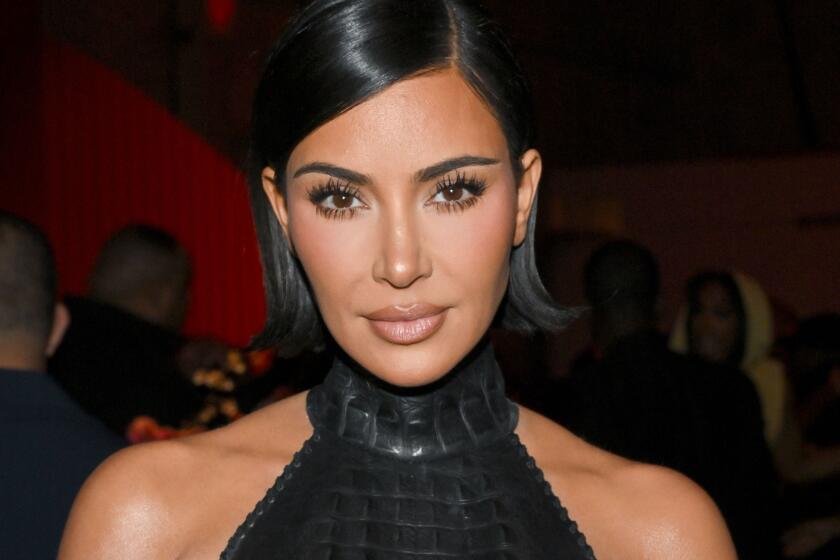Review: In Yo-Yo Ma concert with L.A. Chamber Orchestra, simplicity outshines the showmanship

- Share via
This is Jeffrey Kahane’s 20th and last season as music director of the Los Angeles Chamber Orchestra, and he is going out with a flourish of events. One took place Sunday night in USC’s Bovard Auditorium, where the world’s most popular cellist, Yo-Yo Ma, joined Kahane for a sonata and a concerto.
The concert amounted to a reunion for two longtime friends who were touring partners for about a decade.
Tickets were not cheap — starting at $90 — and Bovard can be problematic to reach. (It took half an hour to move one block on Figueroa Street toward the parking garage.) The program contained neither Kahane feelers into new music nor Ma’s adventures into whatever outlier idioms happen to pique his interest. Rather, it was standard Haydn and Brahms on the menu.
SIGN UP for the free Essential Arts & Culture newsletter »
First, with Kahane on piano, LACO concertmaster Margaret Batjer and principal cellist Andrew Shulman played the Haydn Piano Trio No. 39 in G, better known as the “Gypsy” Trio because of its famous “Gypsy Rondo” finale, far and away the best thing about the piece. Batjer most vividly pointed out the Rondo’s rhythms, and the three had fun racing the tempo to the point where the thing nearly ran off the rails.
Then the Ma-Kahane duo came out firing with the quasi-symphonic Brahms Cello Sonata No. 2. With its lid fully opened, the piano tended to overwhelm Ma’s dark-shaded yet not voluptuous tone, at least from where I sat near the stage, yet both dug in tempestuously.
The full chamber orchestra assembled itself for Brahms’ Variations on a Theme by Haydn, under Kahane’s vigorous direction. It was startling how much richer the orchestra sounds in Bovard than in the Alex Theatre in Glendale, where I usually hear the group. The cellos and basses bloomed with a warm, woodsy timbre, the pizzicatos firm and clear. You could sense the air around the winds as their sound flooded the room.
Later, seated on a platform, Ma sounded more glamorous, projecting into the room more in the Haydn Cello Concerto No. 1, with Kahane directing traffic from a harpsichord. It’s hard to say where Ma’s level of interest in the standard concertos is these days, but precious mannerisms, particularly in the second movement, disrupted the line.
Nevertheless, the collaboration took. LACO sounded great, and you could sense why Ma continues to capture the public’s attention like no other cellist. He smiled, he mugged, he played to various sections of the orchestra, he powered through the last bars with a blast of showmanship. He looked like he was enjoying himself, and he communicated that joy to the folks in the seats.
For an encore, Ma invoked “the freedom to imagine and to create” by playing the Catalan folk song “Song of the Birds,” with which Pablo Casals used to sign off his concerts, including the legendary one at the Kennedy White House in 1961. Ma played it a cappella — simply, evenly, beautifully. It was his finest moment of the night.
Follow The Times’ arts team @culturemonster.
ALSO
20 years after his death, Toru Takemitsu still sending signals in his music
The connection between Gordon Davidson and Neville Marriner, and what it means for modern-day L.A.
Chelsea Manning as opera: Story of transgender WikiLeaks figure unfolds in ‘The Source’
More to Read
The biggest entertainment stories
Get our big stories about Hollywood, film, television, music, arts, culture and more right in your inbox as soon as they publish.
You may occasionally receive promotional content from the Los Angeles Times.










